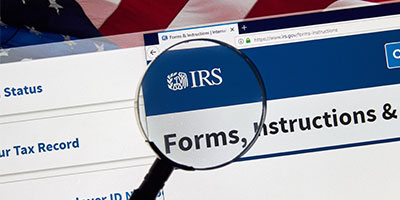
Aug 21, 2025 | Buying Real Estate, Consumer Tips, Credit Scoring, Home Building Tips, Home Buyer Tips, Home Buying Tips, Home Closings, Home Mortgage, Home Mortgage Tips, Home Seller Tips, Home Selling Tips, Home Tips, Home Values, Homebuyer Tips, Homeowner Tips
Once upon a time, the path to homeownership started in your late 20s. Today, the median age of a first-time buyer has climbed to 38 — the highest in U.S. history. In Massachusetts and New Hampshire, where prices remain high and incomes haven’t kept pace, first-time buyers make up only 24% of the market. This generational shift isn’t just a national trend — it’s reshaping local markets, too. Let’s explore why fewer young buyers are entering the game and what it means for buyers, sellers, and lenders alike.
The Shrinking First-Time Buyer Pool
In 2010, first-time buyers represented half the housing market. By 2024, that number dropped to less than a quarter. It’s not because younger generations don’t want to buy — surveys show they do — but the financial barriers are higher than ever.
For Massachusetts and New Hampshire buyers, the challenge is particularly acute. Both states rank among the nation’s most expensive housing markets, with limited inventory and bidding wars still common in desirable areas. That leaves many would-be buyers sidelined, even when mortgage rates dip slightly.
Why It’s Harder Than Ever
The income needed to buy a median-priced home has soared to over $126,000 a year, nearly 60% higher than in 2021. Meanwhile, household incomes in the region have barely budged. That mismatch has locked many younger buyers out of the market.
Millennials and Gen Z carry heavy financial baggage, from student loans to credit card balances. With Gen Z’s average personal debt topping $94,000, saving for a down payment feels more like a marathon than a sprint.
Entry-level homes — once the natural first step into ownership — are scarce. Many builders in New England focus on higher-margin luxury units, while affordable starter homes are either aging or quickly snapped up.
Younger generations are delaying marriage, children, and long-term settling, which historically drove first-home purchases. Add in higher rent burdens and inflation, and the dream of ownership is being pushed later into life.
What This Means for Sellers
If you’re selling in Massachusetts or New Hampshire, this trend could mean fewer young families competing for your property. That may soften demand in some price brackets, especially for entry-level homes. On the flip side, it also means that when younger buyers do show up, they’re highly motivated — and often well-prepared with family support, FHA financing, or cash gifts.
What This Means for Lenders
Lenders can’t assume yesterday’s products will work for today’s market. Winning over first-time buyers requires:
- FHA and low down payment options to lower the entry barrier
- Alternative credit scoring (including rental and utility history) to qualify more applicants
- Digital-first lending to meet younger buyers where they are
- Educational resources to guide cautious, debt-burdened buyers through the process
The lenders who succeed won’t just hand out mortgages — they’ll provide tools, trust, and guidance.
What This Means for Buyers
If you’re a first-time buyer in MA or NH, you’re not alone in feeling like the deck is stacked against you. But there are pathways forward:
- Explore FHA or MassHousing programs that reduce down payment hurdles
- Work with a closing attorney early to understand costs and risks
- Consider expanding your search beyond major metros into more affordable towns or suburbs
The shrinking pool of first-time buyers isn’t just a statistic — it’s a reality that shapes how homes are bought, sold, and financed in Massachusetts and New Hampshire. For buyers, it means persistence and planning. For sellers, it means understanding who your likely buyers really are. And for lenders, it means rethinking old playbooks to stay relevant.
At The Law Office of David R. Rocheford, Jr., P.C., we help buyers, sellers, and lenders adapt to today’s challenges and keep closings on track.
Ready to navigate the new landscape? Contact us today
Providing title, escrow, closing and settlement services to clients throughout Massachusetts and New Hampshire
“I would highly recommend David as a closing attorney. I have known David and have been using his office for many years. David’s professionalism when dealing with me, my closing department and most especially my clients has been always exemplary.”
SENIOR LOAN OFFICER, SHAMROCK FINANCIAL SERVICES
“The Law Office of Attorney David R. Rocheford, Jr. is by far the most exceptional real estate law office that I have had the pleasure of working with. The professionalism is by far second to none.”
SENIOR LOAN OFFICER, SALEM FIVE MORTGAGE SERVICES
“Attorney David Rocheford has provided settlement and title services for me and Greenpark Mortgage several years. He has assisted all of my clients, including my family and friends with mortgage closings. Always providing excellent service. Reliable and trustworthy!”

Jun 19, 2025 | Around The Home, Around The Hoome, Artificial intelligence, Buying Real Estate, Chapter 7 Bankruptcy, Consumer Tips, Credit Scoring, Fair Housing, Federal Reserve, FHFA, Financial Crisis, Financial Fraud, Financial Reports, Foreclosure, Happy Thanksgiving, Holidays, Home Building Tips, Home Buyer Tips, Home Buying Tips, Home Care, Home Care Tips, Home Closings, Home Decorating, Home Financing Tips, Home Maintenance, Home Mortgage, Home Mortgage Tips, Home Seller Tips, Home Selling Tips, Home Tips, Home Values, Homebuyer Tips, Homeowner Tips, Housing Analysis, Housing Market, Interesting Stuff, Investment Properties, Legislation, Market Outlook, Mortagage Tips, Mortgage, Mortgage Guidelines, Mortgage Lenders, Mortgage Rates, Mortgage Tips, mortgage-rates-whats-ahead-september-17-2012, News, Organization Tips, Personal Finance, Probate Law, Rankings, Real Estate, Real Estate Agent Information, Real Estate Definitions, Real Estate Tips, Real Estate Trends, Realtors, Selling Real Estate, Selling Your Home, Short Sales, Statistics, Success, Taxes, The Economy, Title Insurance
Whether you’re buying with cash, investing from abroad, transferring property to a family member, or just trying to close without a headache, you’ll want to know what can trigger federal scrutiny — and how to stay off the radar.
From flagged wire transfers and shell companies to gift-of-equity sales and land near military zones, this isn’t your average title-and-keys situation.
It’s real estate with a side of national security, tax enforcement, and financial crime prevention.
Is Big Brother Watching Your Home Sale?
What Buyers and Sellers Should Know About Federal Oversight
You’re Not Paranoid — They Might Actually Be Watching
What you didn’t know on how federal agencies keep tabs on select real estate transactions.
Your Closing Packet Could Be a Federal File
How Your Paper Trail Might Raise Red Flags — And What You Can Do About It
What the FBI, IRS, and Homeland Security
Could See in Your Closing Docs
We’re unpacking what agencies might spot inside your deal’s fine print.
Caught in the Crosshairs? What Triggers Federal Interest in Your Home Sale
The Top Red Flags That Could Invite a Closer Look from Washington
Cash, LLCs, or Land Near a Base? You Might Just Be a Target
The warning signs that put your deal on the government’s radar — and how to stay clear.
Follow the Money: How the IRS Tracks Financial Crimes Through Real Estate
From Unreported Income to Shell Game Schemes
— What IRS-CI Is Looking For
Your Closing Could Be an Audit Trigger — Here’s How the IRS Sees It
Explore the patterns, documents, and loopholes that turn ordinary deals into criminal cases.
Providing title, escrow, closing and settlement services to clients throughout Massachusetts and New Hampshire
“As a realtor, the Rocheford team went above and beyond to make sure my client was not only protected from a legal standpoint but also operated in a timely manner to execute the sale of my client’s dream home.
Thank you for the great experience for myself and my client! Looking forward to our next deal together!”
Realtor®
“I don’t usually use attorneys that often. But if an attorney is needed, I couldn’t recommend this law office enough. I always pride myself on responding quickly to emails and calls, but I was in awe of how fast paralegal Robert Heckman would respond to us. We sold our house a couple months ago and then did a two-part land swap with neighbors and my folks, and both transactions were seamless, including coming in to sign paperwork.
In short, if you need a law office that is responsive and attentive to detail, definitely consider them!”
Leominster, MA
“Excellent, conscientious and professional.
The communication throughout our Real Estate transaction was better than expected. We thought the fee to be very reasonable considering the work accomplished on our behalf. The law office handled the entire closing without us having to be in attendance….as we requested. I have had experience with very competent lawyers and law firms as the result of my previous profession. I would place this law office right up there among the best in their real estate field of expertise and surprisingly at very reasonable and affordable rates/fees.”
Buzzards Bay, MA
Jun 20, 2023 | Home Values
 The bathroom is one of the most important and frequently used spaces in a home. Over time, it may start to show signs of wear and tear or become outdated. If you’re considering renovating your bathroom, one of the first decisions you’ll face is whether to tackle the project yourself or hire a professional. Both options have their pros and cons, and it’s essential to weigh them carefully before deciding.
The bathroom is one of the most important and frequently used spaces in a home. Over time, it may start to show signs of wear and tear or become outdated. If you’re considering renovating your bathroom, one of the first decisions you’ll face is whether to tackle the project yourself or hire a professional. Both options have their pros and cons, and it’s essential to weigh them carefully before deciding.
DIY Renovation:
One of the most significant advantages of a DIY bathroom renovation is the potential cost savings. By doing the work yourself, you eliminate the labor costs associated with hiring a professional. You have control over the materials and can find budget-friendly options to stay within your desired price range.
Taking on a DIY bathroom renovation also gives you complete control over the project. You can choose the design, materials, and timeline that suit your preferences and schedule. This level of flexibility allows you to customize your bathroom to your exact specifications.
Completing a DIY bathroom renovation can be a rewarding experience. Seeing the transformation unfold before your eyes and knowing that you accomplished it on your own can provide a great sense of pride and satisfaction. It can also be a learning opportunity, as you’ll gain new skills and knowledge throughout the process.
Hiring a Professional:
Professional bathroom renovators bring a wealth of knowledge and experience to the table. They are well-versed in all aspects of bathroom renovations, from design to construction. Their expertise ensures that the project is executed efficiently and to a high standard, resulting in a beautiful and functional bathroom.
Hiring a professional allows you to save time and effort. They have a team of skilled workers who can complete the renovation quickly and efficiently. Professionals also have access to specialized tools and equipment that can streamline the process and deliver excellent results. Professional bathroom renovators take pride in their work and strive to deliver exceptional quality.
The decision between a DIY bathroom renovation and hiring a professional depends on your skills, budget, and personal preferences. DIY projects can be cost-effective and rewarding, but they require time, effort, and a certain level of expertise. Hiring a professional ensures expertise, efficiency, and high-quality results but comes with a higher cost and limited control. Whichever option you choose, thorough planning, research, and realistic expectations are essential for a successful bathroom renovation.
Feb 7, 2018 | Home Values
 Home prices increased in November, with national home prices up 0.70 percent month-to-month and 6.20 percent higher year-over year. Case-Shiller’s 20-City Home Price Index rose by 0.70 percent in the three-month period ending in November; nationally, home prices grew 6.20 percent year-over-year.
Home prices increased in November, with national home prices up 0.70 percent month-to-month and 6.20 percent higher year-over year. Case-Shiller’s 20-City Home Price Index rose by 0.70 percent in the three-month period ending in November; nationally, home prices grew 6.20 percent year-over-year.
Seattle, Washington held first place in home price growth with a year-over-year increase of 12.70 percent. Las Vegas, Nevada home prices followed with year-over-year home price growth of 10.60 percent. San Francisco, California home prices grew by 9.10 percent year-over-year. Slim supplies of homes for sale drove rising home prices and sidelined would-be borrowers as affordability remained out of reach.
Home Prices Get a Pre-Recession Do-Over in Some Cities
David M. Blitzer, Chairman of the S&P Dow Jones Indices Committee, said that Los Angeles and San Diego, California along with Las Vegas, Nevada and Miami, Florida are repeating fast-paced price gains that they had prior to the recession.
Mortgage Rates, Building Costs Impact Supply of Homes and Affordability
Combined effects of high mortgage rates and rapidly rising home prices could dampen buyer enthusiasm over time, but the time-worn proclamation that what goes up must come down has not applied to home prices in high demand metro areas. Home buyers may rush to close their home loans before rates rise, but more buyers may delay buying a home due to few options, higher home prices and rising rates.
Lower taxes and rising wages may encourage renters to buy homes, but home prices continued to outstrip income for many potential buyers.
Building more homes is the only relief in sight for low inventories of homes for sale, but builders face rising materials costs, shortages of lots suitable for building and insufficient workers. Other factors impacting home building and buying homes include poor weather in some areas during December, and further shortages of homes caused by natural disasters in 2017.
2018 may see high-priced local areas develop affordable homeownership programs as current prices continue to rise above interested buyers’ financial resources.
Nov 29, 2017 | Home Values
 Home prices continued to rise in September according to Case-Shiller National and 20-City home price index reports. According to the National Home Price Index, national home prices rose 0.70 percent month for the three months ending in September. The National Index regained its pre-housing bubble peak and surpassed it by 5.90 percent as of September.
Home prices continued to rise in September according to Case-Shiller National and 20-City home price index reports. According to the National Home Price Index, national home prices rose 0.70 percent month for the three months ending in September. The National Index regained its pre-housing bubble peak and surpassed it by 5.90 percent as of September.
The 20-City Home Price Index rose 0.50 percent from August’s reading. Analysts forecast a growth rate of 0.40 percent month-to-month. The 20-City Home Price Index indicates a home price growth rate 0f 6.20 percent year-over-year. The 20-City Index remained 1.50 percent below its peak in 2006.
The 20-City Home Price Index showed 16 of 20 cities posted gains in home price growth. Seattle, Washington, which has consistently held the top spot for year-over-year home price growth, posted slower growth for September. Seattle held on to its lead for year-over-year home price growth with a reading of 12.90 percent. Las Vegas Nevada held second place in the 20-City Index with a year-over-year home price growth of 9.00 percent. San Diego, California held third place with a year-over-year reading of 8.20 percent appreciation in home prices.
Case–Shiller Home Prices: Not the Whole Story
Analysts caution that while Case-Shiller Home Price Index reports are intended as a tool for real estate investors, they may not reflect all factors impacting U.S. housing markets. An analysis published in May by Trulia indicated that only 38 percent of U.S, homes have recovered their post-recession values. Some analysts say that methodology used for calculating the Case-Shiller home price index readings does not reflect individual or local factors impacting home prices.
In an unrelated report, the Federal Housing Finance Agency reported that home prices for properties with mortgages sold to or guaranteed by Fannie Mae and Freddie Mac were up 6.50 percent from the third quarter of 2016 to the third quarter of 2017.
FHFA reported that the District of Columbia and all 50 states posted higher home price gains for the period between Q3 2016 and Q3 2017. The top three year-over-year home price gains were held by Washington, D.C at 11.60 percent; the state of Washington held second place with a gain of 11.50 percent and Hawaii and Arizona tied for third place with year-over-year home price gains of 10.00 percent.
FHFA reported home price growth in all 100 areas it tracks and said that the Seattle, Washington region held the highest year-over-year growth rate of 14.60 percent.
Aug 16, 2017 | Home Values
 Home builder confidence in housing market conditions surged in August after sagging to an eight-month low in July. The National Association of Home Builders reported a July reading of 68 in August after analysts expected a one- point increase from July’s Housing Market Index reading of 64. Any reading over 50 indicates that more builders consider housing market conditions positive than those who do not.
Home builder confidence in housing market conditions surged in August after sagging to an eight-month low in July. The National Association of Home Builders reported a July reading of 68 in August after analysts expected a one- point increase from July’s Housing Market Index reading of 64. Any reading over 50 indicates that more builders consider housing market conditions positive than those who do not.
Component readings of the Housing Market Index also improved in August. Builder confidence in current housing market condition rose four points to 74; Builder confidence in housing market conditions over the next six months rose by five points to 78. Builder confidence in buyer traffic in new home developments rose one point to an index reading of 49.
Positive Economy Fuels Builder Confidence
Builders have long cited a shortage of buildable lots and labor, along with rising costs as impacting confidence in current and future confidence in housing markets. NAHB said that labor shortages are worse in 2017 than in 2016. Builders reported labor shortages including carpenters and electricians. August readings suggest that positive economic developments are mitigating long-term builder concerns, but a recent tariff on Canadian lumber raised materials costs for some builders.
The discrepancy between builder confidence and housing starts concerns real estate pros and housing and lending industry leaders, but without enough workers to staff their building crews, home builders face obstacles in meeting buyer demand for homes.
Stronger economic and jobs indicators are boosting builder confidence in housing market conditions. As more prospective home buyers find stable jobs, buying a home becomes possible for prospective buyers who have waited for economic conditions to improve sufficiently to invest in home ownership.















 The bathroom is one of the most important and frequently used spaces in a home. Over time, it may start to show signs of wear and tear or become outdated. If you’re considering renovating your bathroom, one of the first decisions you’ll face is whether to tackle the project yourself or hire a professional. Both options have their pros and cons, and it’s essential to weigh them carefully before deciding.
The bathroom is one of the most important and frequently used spaces in a home. Over time, it may start to show signs of wear and tear or become outdated. If you’re considering renovating your bathroom, one of the first decisions you’ll face is whether to tackle the project yourself or hire a professional. Both options have their pros and cons, and it’s essential to weigh them carefully before deciding. Home prices increased in November, with national home prices up 0.70 percent month-to-month and 6.20 percent higher year-over year. Case-Shiller’s 20-City Home Price Index rose by 0.70 percent in the three-month period ending in November; nationally, home prices grew 6.20 percent year-over-year.
Home prices increased in November, with national home prices up 0.70 percent month-to-month and 6.20 percent higher year-over year. Case-Shiller’s 20-City Home Price Index rose by 0.70 percent in the three-month period ending in November; nationally, home prices grew 6.20 percent year-over-year. Home prices continued to rise in September according to Case-Shiller National and 20-City home price index reports. According to the National Home Price Index, national home prices rose 0.70 percent month for the three months ending in September. The National Index regained its pre-housing bubble peak and surpassed it by 5.90 percent as of September.
Home prices continued to rise in September according to Case-Shiller National and 20-City home price index reports. According to the National Home Price Index, national home prices rose 0.70 percent month for the three months ending in September. The National Index regained its pre-housing bubble peak and surpassed it by 5.90 percent as of September. Home builder confidence in housing market conditions surged in August after sagging to an eight-month low in July. The National Association of Home Builders reported a July reading of 68 in August after analysts expected a one- point increase from July’s Housing Market Index reading of 64. Any reading over 50 indicates that more builders consider housing market conditions positive than those who do not.
Home builder confidence in housing market conditions surged in August after sagging to an eight-month low in July. The National Association of Home Builders reported a July reading of 68 in August after analysts expected a one- point increase from July’s Housing Market Index reading of 64. Any reading over 50 indicates that more builders consider housing market conditions positive than those who do not.